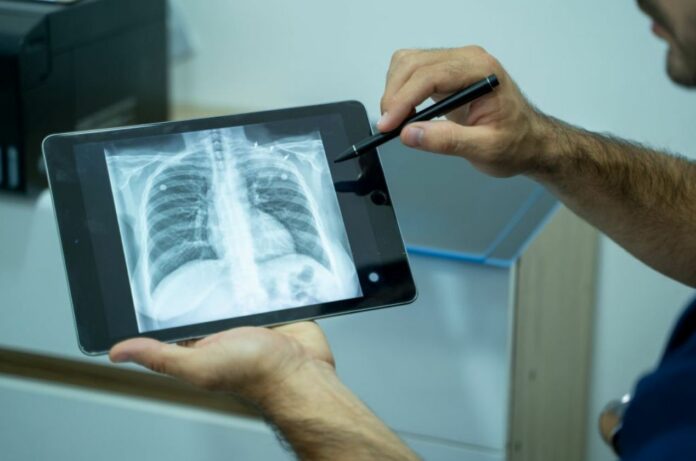“The beauty of this approach is you only need an X-ray,” and based on that single chest X-ray image, the new method can predict “future major adverse cardiovascular events with similar performance and incremental value to the established clinical standard.”
And “as chest X-rays are commonly available,” this new “approach may help identify individuals at high risk.”
A single chest X-ray may now forecast a person’s 10-year risk of mortality from a heart attack or stroke due to atherosclerotic cardiovascular disease, according to a deep learning algorithm built by researchers.
Deep learning is a sophisticated kind of AI that may be taught to analyze X-ray pictures for patterns that indicate the presence of illness.
This new “deep learning model offers a potential solution for population-based opportunistic screening of cardiovascular disease risk using existing chest X-ray images,” says lead author, Jakob Weiss, adding, “this type of screening could be used to identify individuals who would benefit from statin medication but are currently untreated.”
To figure out who should take a statin for primary prevention, the current guidelines say to estimate the 10-year risk of major adverse cardiovascular disease events.
The atherosclerotic cardiovascular disease (ASCVD) risk score is used to assess this threat; it is a statistical model that takes into account a wide range of factors such as age, sex, race, systolic blood pressure, hypertension therapy, smoking, Type 2 diabetes, and blood tests. Patients who have a 10-year risk that is 7.5% or above are often advised to take statin medication.
“The variables necessary to calculate ASCVD risk are often not available, which makes approaches for population-based screening desirable,” adds Dr. Weiss. “As chest X-rays are commonly available, our approach may help identify individuals at high risk.”
A deep learning model was built by Dr. Weiss and a group of researchers utilizing only one chest X-ray (CXR) input. They used 147,497 chest X-rays from 40,643 people in the Prostate, Lung, Colorectal, and Ovarian Cancer Screening Trial, a multi-center, randomized controlled trial designed and funded by the National Cancer Institute, to make the CXR-CVD risk model. This model is used to predict the risk of death from cardiovascular disease.
“We’ve long recognized that X-rays capture information beyond traditional diagnostic findings, but we haven’t used this data because we haven’t had robust, reliable methods,” explains Dr. Weiss. “Advances in AI are making it possible now.”
The researchers tested the model on the second group of 11,430 outpatients who had a routine outpatient chest X-ray at Mass General Brigham and could be eligible for statin therapy. The average age of this group was 60.1 years, and 42.9% were men.
Over the course of the median follow-up of 10.3 years, 1,096 patients, or 9.6%, out of 11,430 patients, had a serious adverse cardiac event. There was a strong link between the risk that the CXR-CVD risk deep learning model predicted and the major cardiac events that were seen.
The researchers also compared the model’s ability to predict outcomes to the established clinical standard for deciding whether or not a person should take statins. Due to missing data (like blood pressure and cholesterol levels) in the electronic record, this could be calculated for only 2,401 patients or 21%. For this group of patients, the CXR-CVD risk model worked just as well as the clinical standard and even added more value.
“The beauty of this approach is you only need an X-ray, which is acquired millions of times a day across the world,” remarks Dr. Weiss. “Based on a single existing chest X-ray image, our deep learning model predicts future major adverse cardiovascular events with similar performance and incremental value to the established clinical standard.”
Dr. Weiss said that more research, like a controlled, randomized trial, is needed to prove the deep learning model, which could eventually help doctors make decisions.
“What we’ve shown is a chest X-ray is more than a chest X-ray,” adds Dr. Weiss.
“With an approach like this,” according to the author, “we get a quantitative measure, which allows us to provide both diagnostic and prognostic information that helps the clinician and the patient.”
The study’s findings were presented today at the Radiological Society of North America’s annual conference.
Image Credit: Getty
